



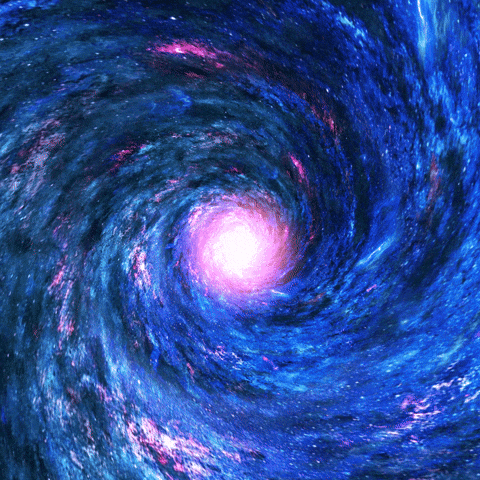
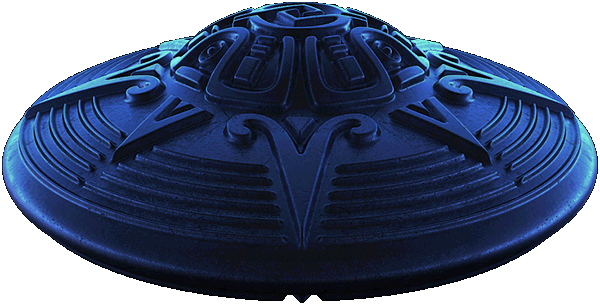

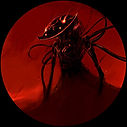
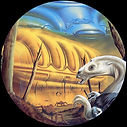

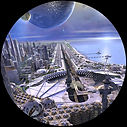

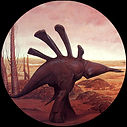






UFO TRUTH The actual hidden truth about UFOs
A former Pentagon official — driven, he says, by his duty to the truth — goes public with an explosive allegation. Facing a scrum of TV cameras and members of Congress, this official claims that the US government has been keeping crashed alien spaceships under wraps for decades.
It sounds like a pitch for a Hollywood movie. But last year, Americans saw it happen on the news. The former Pentagon official, David Grusch, had been an Air Force intelligence officer. He told a congressional committee that he’d learned of a decades-long Pentagon program focused on “crash retrieval and reverse engineering” of UFOs from other planets. Grusch also said that remains found at the spacecraft crash sites were “non-human biologics.”
That’s right. Crashed alien spacecraft and dead extraterrestrials, right there in the Congressional Record. If it wasn’t the wildest thing ever broadcasted on C-SPAN, it must’ve been close. Someone should look into this, right?
It turns out that someone already had. In 2022, the Pentagon tapped a veteran scientist and intelligence officer named Sean Kirkpatrick to set up a new office tasked with investigating UFO sightings by the US military. Named the All-domain Anomaly Resolution Office by the US Department of Defense, Kirkpatrick told us his team dug into UFO cases and interviewed US service members who said they had knowledge about encounters with UFOs.
David Grusch, former member of the Defense Department's Unidentified Aerial Phenomena Task Force, testifies during the House Oversight and Accountability Subcommittee on National Security, the Border, and Foreign Affairs hearing on Wednesday, July 26, 2023.
Tom Williams/CQ-Roll Call, Inc/Getty Images/File
Kirkpatrick recently retired from his job at the Pentagon and spoke with us for the Audible podcast “In the Room.” Kirkpatrick and his team investigated every US government UFO sighting going back to Roswell in the 1940s, putting the findings in a report that the Pentagon released publicly on Friday. That report debunks multiple claims of alien visitations to Earth and of any purported cover up of those visits.
In the most extensive media interview he’s given, Kirkpatrick laid out a convincing case that the stories swirling for decades about the alleged government cover-up of alien-related UFOs may well have been fueled largely by true believers inside the US government or with close ties to it.
Since the term “flying saucer” was first coined, much of the conspiratorial thinking about UFOs has been spawned by people catching glimpses of highly secret US aircraft and wanting answers. And when the government doesn’t provide answers, the public imagination takes over.
US Deputy Director of Naval Intelligence Scott Bray explains a video of an unidentified aerial phenomena, as he testifies before a House Intelligence Committee subcommittee hearing at the US Capitol on May 17, 2022.
But, in fact, Kirkpatrick says, his investigation found that most UFO sightings are of advanced technology that the US government needs to keep secret, of aircraft that rival nations are using to spy on the US or of benign civilian drones and balloons.
“There’s about two to five percent of all the (UFO reports that are)… what we would call truly anomalous,” says Kirkpatrick. And he thinks explanations for that small percentage will most likely be found right here on Earth.
The Roswell incident
This is how Kirkpatrick and his team explain the Roswell incident, which plays a prominent role in UFO lore. That’s because, in 1947, a US military news release stated that a flying saucer had crashed near Roswell Army Air Field in New Mexico.
A day later, the Army retracted the story and said the crashed object was a weather balloon. Newspapers ran the initial saucer headline, followed up with the official debunking, and interest in the case largely died down. Until 1980, that is, when a pair of UFO researchers published a book alleging that alien bodies had been recovered from the Roswell wreckage and that the US government had covered up the evidence.
Kirkpatrick says his office dug deep into the Roswell incident and found that in the late 1940s and early 1950s, there were a lot of things happening near the Roswell Airfield. There was a spy program called Project Mogul, which launched long strings of oddly shaped metallic balloons. They were designed to monitor Soviet nuclear tests and were highly secret.
The US Air Force released this photo on June 24 of an aeroshell of a NASA Voyager Mars space probe prior to launch at Walker AFB, New Mexico (formerly Roswell AAF) as part of its report on the so called "Roswell Incident" of 1947.
Reuters
At the same time, the US military was conducting tests with other high-altitude balloons that carried human test dummies rigged with sensors and zipped into body-sized bags for protection against the elements. And there was at least one military plane crash nearby with 11 fatalities.
Echoing earlier government investigations, Kirkpatrick and his team concluded that the crashed Mogul balloons, the recovery operations to retrieve downed test dummies and glimpses of the charred aftermath of that real plane crash likely combined into a single false narrative about a crashed alien spacecraft.
Kirkpatrick also lays out a convincing case that something similar is happening today. He says new technology taking flight now could help explain a lot of the modern era of UFO sightings from the early 2000s on. It’s not just secret government technology, either. Lots of observers get flummoxed when they catch sight of cutting-edge drones and even odd-looking balloons.
Related article Opinion: Congress is too credulous on UFOs
“What’s more likely?” asked Kirkpatrick. “The fact that there is a state-of-the-art technology that’s being commercialized down in Florida that you didn’t know about, or we have extraterrestrials?” he said. “And it even makes me scratch my head more when you show them; here’s the company in Florida that builds exactly what you’ve described. And their response is, well, no, no, no, it’s gotta be extraterrestrials, and you’re covering it up.”
Nevertheless, UFOs remain a genuine national security concern mainly because they are flight hazards. As Kirkpatrick put it, “military pilots that are flying at greater than Mach 1; if they run into a balloon with a tether on it, it’s going to rip a wing off.”
Since 2020, the Pentagon has standardized, de-stigmatized and increased the volume of reporting on UFOs by the US military. Kirkpatrick says that’s the reason the closely covered and widely-mocked Chinese spy balloon was spotted in the first place last year. The incident shows that the US government’s policy of taking UFOs seriously is actually working.
The true believers
So in the face of the actual evidence, why are people in and around government promoting the unsupported idea of alien invaders being covered up by the US government?
“True believers are not just outside of government; many of them are inside government,” Kirkpatrick told us, including the late US Senator Harry Reid, the Nevada Democrat who was Senate Majority leader. Another key player was Reid’s longtime friend Robert Bigelow, a Nevada billionaire and the owner of a company called Bigelow Aerospace, both of whom shared a long-running interest in UFOs. Kirkpatrick says, “Senator Harry Reid was a true believer and thought that ‘Hey, the government is hiding this from congressional oversight.’”
Then-Senate Majority Leader Sen. Harry Reid (D-NV) holds a news conference to announce the inclusion of the "public option" in the Senate's version of the health care reform legislation October 26, 2009 in Washington, DC.
In 2007, Senator Reid got funding for a US Defense Intelligence Agency program that paid $22 million to his buddy Bigelow’s aerospace company — money the company spent on investigations into paranormal phenomena. Among other investigations, Bigelow’s team looked into sightings of UFOs by US military personnel and proposed setting up laboratories to study the purported physical remains of alien spacecraft. (On “60 Minutes” in May 2017, Bigelow said he was “absolutely convinced” that aliens exist and that UFOs have visited Earth.)
Reid told a reporter in Nevada in 2021 that even though this was a secret program to look into UFOs, Bigelow didn’t benefit from “some sweetheart deal … it was put out to bid.” Reid also told The New York Times, “I’m not embarrassed or ashamed or sorry I got this thing going…I think it’s one of the good things I did in my congressional service.”
Yet, Kirkpatrick points out, “none of that actually manifested in any evidence” of alien spacecraft. But stories about these secret programs spread inside the Pentagon, got embellished and received the occasional boost from service members who’d heard rumors about or caught glimpses of seemingly sci-fi technology or aircraft.
And Kirkpatrick says his investigators ultimately traced this game of top-secret telephone back to fewer than a dozen people.
“It all goes back to the same core set of people,” Kirkpatrick said. This is both deeply weird and richly ironic. Because, for decades, UFO true believers have been telling us there’s a US government conspiracy to hide evidence of aliens. But — if you believe Kirkpatrick — the more mundane truth is that these stories are being pumped up by a group of UFO true believers in and around government.
Get Our Free Weekly Newsletter
Sadly, for all the UFO lovers out there, that may be the biggest takeaway from Kirkpatrick’s report to Congress, which is expected to be published later this month. Plenty of outsiders have long speculated about whether the Pentagon’s alien-focused programs were coming up empty and perhaps were suspiciously self-perpetuating.
But now, highly credible people inside the Pentagon — with really high-level security clearances — are finally saying, we looked at every single piece of secret evidence about supposedly alien UFOs. And as far as we can tell, it’s humans all the way down.
Although Kirkpatrick concedes that for those who truly believe that there are alien visitations here on Earth, little will convince them otherwise: “There is absolutely nothing that I’m going to do, say, or produce evidentiary that is going to make the true believers convert … It is a religious belief that transcends critical thinking and rational thought.”
This article has been updated with the Pentagon’s release of a report on UFOs.


NASA Learns the Ugly Truth About UFOs
At a meeting in NASA headquarters yesterday, the public had some blunt questions about UFOs, or, as the government now calls them, “unexplained anomalous phenomena.” A NASA spokesperson summarized them aloud: “What is NASA hiding, and where are you hiding it? How much has been shared publicly? Has NASA ever cut the live NASA TV feed away from something? Has NASA released all UAP evidence it has ever received? What about NASA astronauts—do they have an NDA or clearance that does not allow them to speak about UAP sightings? What are the science overlords hiding?” In short: Are you guys lying to everyone?
Enjoy a year of unlimited access to The Atlantic—including every story on our site and app, subscriber newsletters, and more.
There was some gentle laughter among the panelists, whom NASA had convened on the subject. No, NASA “has never intentionally cut a live feed to hide anything,” a senior agency official said. A retired astronaut who worked at NASA for 20 years chimed in: “There was never any formal or informal discussions at all about UAPs or UFOs or anyone reporting anything that would suggest something from beyond our planet.” An astrobiologist—the kind of scientist whose job revolves around finding extraterrestrial life—said that scientists are a “rebellious” type, and if someone told him to keep a secret as big as this, he’d want to spill.
The group had spent the past several months examining reports of strange sightings in the sky, and yesterday’s hours-long event was its first (and only) public meeting. The NASA-organized committee, a mix of scientists and industry experts, did not make any dramatic pronouncements. The main takeaway was what we’ve heard all along. “Many events have conventional explanations,” David Spergel, an astrophysicist who chairs the committee, told reporters. (See: balloons.) “There remain events that we do not understand,” he said, “but these events tend to be characterized by poor-quality, limited data.” Ultimately, the group found UAP data “insufficient to provide conclusive evidence about the nature and origin of every UAP event,” Spergel said.
Don’t miss what matters. Sign up for The Atlantic Daily newsletter.
Email Address
Your newsletter subscriptions are subject to The Atlantic's Privacy Policy and Terms and Conditions.
But in doing this work, NASA has discovered a different truth: Talking about UFOs can be a nasty business. If you publicly investigate, contemplate, or even breathe about UFOs, you will probably be harassed on the internet. Several of the panelists “have been subjected to online abuse due to their decision to participate on this panel,” Dan Evans, the NASA official assigned to the committee, said at the outset of the meeting. “A NASA security team is actively addressing this issue.’ (Evans later told me that there were “specific attacks on the character of individuals.”) And then there are the accusatory questions and distrust from the public. The agency has finally opened the doors to serious discussions about UFOs, and what it’s gotten instead is seriously toxic.
Recommended Reading
Dear Therapist: My Friends Stopped Talking to Me After My Divorce
4 Rules for Identifying Your Life’s Work
I Made One Simple Financial Change and It Lowered My Spending
NASA has historically steered clear of anything involving UFOs, leaving the matter up to other federal agencies, which operated clandestine UFO programs for military and national-security purposes. The world’s top space agency was more concerned with searching for alien life far beyond Earth’s atmosphere—around planets orbiting other stars, for example—than weird things in our own sky. But UFOs have been popping up in the news quite a bit in recent years, thanks to newspaper reports on those secret government programs and the resulting congressional hearings. But last year, NASA’s administrator, Bill Nelson, seemed to succumb to the pull of UFOs and directed the agency to form a panel of experts.
Spergel and the other members of the committee stressed that their goal was not to conduct an exhaustive investigation of every frame of grainy footage but to provide a “roadmap” for NASA that details how the agency could contribute to the future study and analysis of UFOs. The panel did not have access to any classified data either. That approach was bound to provoke those who believe that some reported UFOs have extraterrestrial origins, and that the government—and perhaps now NASA too—is hiding that fact.
Read: What the UFO discussion really needs
Despite the high emotions surrounding UFOs, nearly all public meetings on the subject are quite anticlimactic, and distinctly lacking in someone unfurling a giant sign from the ceiling that declares, once and for all, WE FOUND THE ALIENS. I’ve covered the space industry for years, and to me, the most surprising result was how absorbed NASA seemed to be in the discussion. Last year, a NASA official said a dedicated UAP-research effort would pose a “reputational risk” for the agency. But yesterday, this committee was advising NASA to approach UFOs in a way that the agency has not done in its nearly 65-year existence. Instead of opting out, the panelists said that NASA should help reduce the stigma surrounding UFOs; one expert from the Federal Aviation Administration said that the agency should “leverage its brand image” to do so. Evans, the NASA official, was also on board, saying, “It’s now our collective responsibility to investigate these occurrences with the rigorous scientific scrutiny that they deserve.”
Make your inbox more interesting with newsletters from your favorite Atlantic writers.
The NASA panel must now draw up a formal report to deliver to agency leaders this summer. One panelist said that NASA should set up its own UFO office, a modest but dedicated force, to collect and archive data alongside other, more serious programs in the Defense Department. But first, NASA would probably like everyone to stop getting worked up over aliens. Nicola Fox, NASA’s associate administrator for science missions, said yesterday that “harassment only leads to further stigmatization of the UAP field, significantly hindering scientific progress and discouraging others to study this important subject matter.” Indeed, the road to understanding the nature of UFOs will be paved with abuse and, as NASA now knows, an ungodly number of emails. “I think every one of the 16-strong panel, plus myself, receives emails on a daily basis of all sorts concerning this subject,” Evans told me. Some of them are terrible, and, unfortunately, there’s nothing anomalous about that.

We’ve just released a big update to our Gallery, adding 70 of the best new images we have received since the last update. The Gallery is a great place to check out the incredible variety of types of craft reported to NUFORC.

Our latest batch of UFO/ UAP reports include close up sightings of massive triangular UFO’s, weird rectangles, bizarre orbs, floating metallic spheres, and lights in the sky performing strange and dramatic maneuvers. Witnesses also continue to send in stories of impressive sightings from their past, feeling compelled to record them

The National UFO Reporting Center Data Bank has been updated with 396 new reports, received at our center since March 13. To say things have been dramatic in the skies would be an understatement. Here are some of the best recent sightings:: April 12, 2024, at 21:56, Navarre, Florida: A
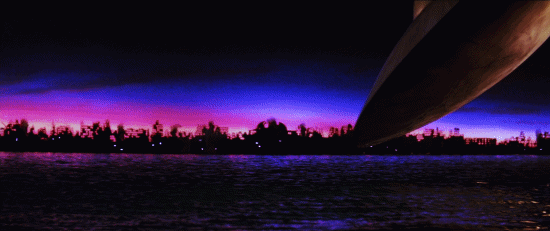



Scientists are getting serious about UFOs. Here’s why
Understanding what are now called UAPs is crucial for national security and aircraft safety
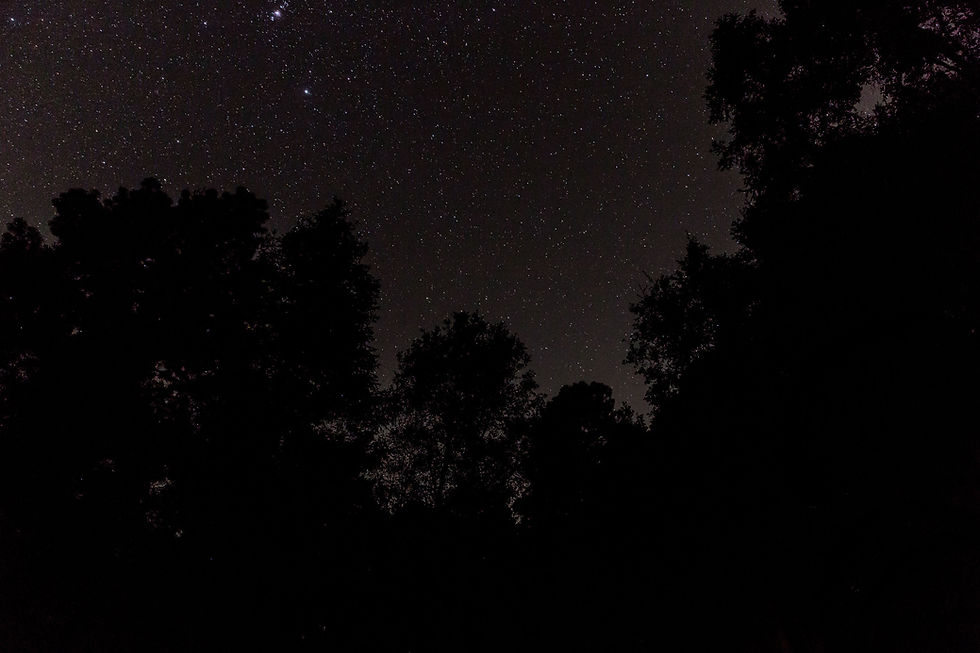
For millennia, humans have seen inexplicable things in the sky. Some have been beautiful, some have been terrifying, and some — like auroras and solar eclipses before they were understood scientifically — have been both. Today’s aircraft, balloons, drones, satellites and more only increase the chances of spotting something confounding overhead.
In the United States, unidentified flying objects, or UFOs, came into the national spotlight in the late 1940s and early ’50s. A series of incidents, including a supposedly crashed alien spaceship near Roswell, N.M., generated something of an American obsession. The Roswell UFO turned out to be part of a classified program, the remnants of a balloon monitoring the atmosphere for signs of clandestine Russian nuclear tests. But it and other reported sightings prompted the U.S. government to launch various projects and panels to investigate such claims, as Science News reported in 1966 (SN: 10/22/66), as well as kicking off hobby groups and conspiracy theories.
The best of Science News - direct to your inbox
Headlines and summaries of the latest Science News articles, delivered to your email inbox every Thursday.
In the decades since, UFOs have often come to be dismissed by scientists as the province of wackos and thus unworthy of study. The term UFO has a smirk factor to it, says Iain Boyd, an aerospace engineer at the University of Colorado Boulder and director of the school’s Center for National Security Initiatives.
But government agencies and officials are trying to change that attitude. Among the biggest concerns is that the stigma associated with reporting a sighting has the side effect of stifling reports from pilots or citizens who might have valuable information about potential threats in U.S. air space — such as the Chinese spy balloon that traversed North America and made headlines last year.
“If there’s something interfering with flights, people or cargo, that’s a problem,” Boyd says.
To help reduce the stigma, many serious investigators now refer to UFOs as “unidentified anomalous phenomena,” or UAPs, coined by the U.S. Department of Defense in 2022. “The term UAP brings science to the issue,” Boyd says. It also rightly broadens the view to include natural atmospheric phenomena as well as things outside the atmosphere, such as satellites and particularly bright planets such as Venus.
An independent team of experts (shown meeting in 2023) suggested NASA help fill in gaps in collecting UAP data.Joel Kowsky/NASA
Investigators of all types have a lot of questions about UAPs that they believe deserve serious scientific scrutiny: Which UAPs are something real and which are merely artifacts of the sensors that detect them? If real, which may be a threat to aviation? A threat to national security? Do they point to some unknown natural phenomena?
Answers may be forthcoming. In June 2022, NASA announced an independent study to determine how the agency could lend its scientific expertise to the study of UAPs. Meanwhile, military and commercial pilots have felt more comfortable making reports and even providing videos taken during close encounters. Some of those reports were discussed as part of congressional hearings in 2022 and 2023, which were covered widely by the media and in part focused on more government transparency (SN: 5/19/22). Those were the first open hearings since the mid-1960s.
Americans for Safe Aerospace, an advocacy organization with a focus on UAPs, supports legislation that would help provide a way for pilots to confidentially report potential sightings to the government.
And government agencies increasingly recognize publicly that strange phenomena in the skies are worthy of attention — whether the phenomena are signs of aliens or not. In 2022, the Pentagon established the All-domain Anomaly Resolution Office to serve as a clearinghouse for government reports of UAPs and for analysts determining if UAPs pose threats. The National UFO Reporting Center, a nonprofit established in 1974, and other organizations continue to collate reports from the public.
By bringing UAPs into the realm of science, the hope is to make the unexplained explainable.
Sponsor Message
Where do UAP sightings occur?
Since its founding, the National UFO Reporting Center has kept a database of UAP sightings, including past and recent incidents reported through its telephone hotline, the mail and online. The database includes almost 123,000 sightings in the United States from June 1930 through June 2022. It’s a trove of data that few if any peer-reviewed scientific studies have used, says Richard Medina, a geographer at the University of Utah in Salt Lake City.
For a study reported in 2023, Medina and colleagues scoured the database to see if they could identify which factors, if any, might affect the number of sightings in a particular area. They focused on the almost 99,000 reports, or about 80 percent of the total, that came from the continental United States from 2001 through 2020. They stuck to the continental United States because tree cover was a factor they were studying, and detailed maps of forested land aren’t available for Alaska’s interior.
First, the researchers calculated the number of UAP sightings that occurred in each county in the Lower 48 states for the 20-year period. Then, they tried to correlate the number of sightings per 10,000 people that lived in each county with environmental factors.
In their sights
An analysis of nearly 99,000 reported UAP sightings pinpointed U.S. counties with a particularly high number of reports per 10,000 people (reddish counties), a low number of reports (blues) and an average number (white). One factor that appears to boost the number of UAP sightings is proximity to an airport or military installation, a hint that aircraft may account for many UAPs.
R.M. Medina, S.C. Brewer and S.M. Kirkpatrick/Scientific Reports 2023 (CC BY 4.0)
As expected, UAP sightings weren’t as frequent in counties with a lot of tree cover and large amounts of nighttime light pollution, the researchers reported in Scientific Reports. Average cloud cover didn’t seem to affect the number of sightings one way or another — but maybe that’s because the team looked at average cloud cover over the course of the year, not the amount of cloud cover at the time of the sighting, Medina suggests.
What did boost the number of sightings substantially was proximity to airports or military installations. Although this analysis doesn’t specifically say that many UAPs in such areas can be attributed to aircraft associated with those facilities, the data are suggestive, Medina notes. At such sites, aircraft are likely to be closer to the ground and more visible than at other places, he adds.
And many of those aircraft could have been classified or experimental craft, according to a report issued earlier this year by the All-domain Anomaly Resolution Office. After undertaking an analysis of reports made to or by the government since 1945, that office found that many sightings could be attributed to never-before-seen craft such as rockets, drones or aircraft incorporating stealth technologies. The analysis found no evidence that any UAPs were signs of extraterrestrials and no evidence that the U.S. government ever had access to alien technology.
A second report, with new analyses focused on more recent sightings, will be released later this year.
What are UAPs?
The task of pinning down the sources of UAPs has become easier thanks to the ever-growing analytical prowess of computers and advanced visualization tools. “What used to take months of analysis before can now be done in just a few minutes,” says Mick West, a retired software engineer in Sacramento, Calif., who runs the website Metabunk.org, where people can post and discuss UAPs and other unusual phenomena.
Take, for instance, an enigmatic sighting of lights in the sky over the Great Plains one night early in 2023. Video of the UAP taken by a commercial pilot in flight caused a stir when it was posted online soon after the sighting, West says.
Whoever posted the video didn’t include specifics about the sighting, other than to say it was taken somewhere over the central United States on a particular date. A pattern of lights on the ground, which turned out to be warning lights atop turbines in a large wind farm, helped investigators on Metabunk locate the plane as somewhere in western Oklahoma.
Certain details about the sighting, such as flashes of lightning on the distant horizon, wouldn’t have occurred on the supposed date of the video, West notes. Using public meteorological databases about the times, dates and locations where lightning strikes occur, the Metabunk crew figured out the video actually had been taken a few days earlier than reported. The date, in turn, helped the group figure out which flight the video was taken from.
Not an alien
In 2023, a commercial airline pilot took a video of a UAP (white arrows, top left), which was posted to the website Metabunk.org. Using the pattern of lights on the ground, Metabunk sleuths determined the UAP was filmed above Oklahoma. Further investigation revealed the date of the flight and flight path (yellow line, right). Computer simulations of the sky helped pinpoint Starlink internet satellites as the source of the mystery lights (bottom left).
Mick West
Then, knowing the date, time and precise coordinates, West and collaborators used computer simulations to re-create what the sky would have looked like in the direction where the UAP was seen. The mystery lights were actually a cluster of Starlink satellites reflecting sunlight from below the horizon as they swooped across the sky. With the first batch launched in 2019, Starlink satellites now circle Earth in the thousands, providing internet service for locales worldwide (SN: 3/12/20). Their movements and patterns in the sky “are still a mystery to some pilots,” West says.
West suggests that people are often too quick to jump from “I saw some lights in the sky” to “Aliens!” With so many possibilities for what UAPs might be — optical illusions, meteorological phenomena and aviation-related sightings, plus more — the experience generally turns out to be more mundane than observers imagine, West says.
“We’re not really looking for aliens,” he explains. “We’re looking to explain what people are seeing.”
The study of UAPs needs more and better data
Good data are key to deciphering UAPs, but they’re often in short supply. Although many reports by pilots include images taken by onboard sensors or with handheld video cameras, those instruments often aren’t sophisticated enough to capture the necessary details. The same is true for sightings reported from the ground, where the specifics of a presumed object’s direction and speed as well as general environmental conditions are often lacking.
By contrast, NASA has a wealth of data from satellites that monitor Earth. Though they don’t have the resolution to spot relatively small objects the size of most UAPs, the satellites are poised to play a supporting role, says astrophysicist Thomas Zurbuchen. Now at ETH Zurich, he’s a former associate administrator of NASA’s Science Mission Directorate. NASA satellites could be key in providing details on any environmental conditions that may coincide with UAPs, according to the NASA team’s report, released in September 2023. Data collected by commercial satellites can play a similar role.
Gathering and analyzing data is a good way to address what UAPs are, Zurbuchen says. “We should be excited about things we don’t understand, whether they’re natural phenomena, balloons or other things,” he says. “We currently don’t understand what’s flying in our airspace, not to the level that’s needed.”
Boyd also emphasizes the need for better data. The sensors typically used on planes today “weren’t designed to detect UAPs, and the signals that we do pick up are sometimes hard to interpret,” he says. Yet getting the right data may prove challenging and expensive. Integrating new types of sensors into the already-complicated electronic systems of military and commercial aircraft would be something of a “needle-in-a-haystack type of endeavor,” Boyd says. “There are more than 100,000 flights per day; how many have actually seen anything?”
Explained anomalous phenomena
Although many UAPs remain puzzling, experts have identified some common sources. Saucer-shaped lenticular clouds, birds in flight, thermal fluctuations in the atmosphere and other natural phenomena explain some sightings, as do celestial objects like Venus. And while no alien technology has been linked to UAPs, human tech has, including weather balloons, satellites, drones, airborne trash and military aircraft. Last year, a particularly spooky spiral in the sky over northwestern Canada turned out to be vapor from unspent fuel released from a SpaceX rocket.
-
Vapor from unspent fuel released from a SpaceX rocket Todd Salat
-
Lenticular clouds Fiona McAllister Photography/Getty Images
-
Birds in flight Diana Robinson Photography/Getty Images
-
Venus in the sky noriakimasumoto/Getty Images
-
Weather balloon NASA
-
Satellites Spacex
-
Vapor from unspent fuel released from a SpaceX rocket Todd Salat
-
Lenticular clouds Fiona McAllister Photography/Getty Images
Item 1 of 6
Perhaps ground-based instruments are the way to go. Several research teams are developing suites of instruments that can observe a broad range of characteristics and be deployed to sites where UAPs are frequently seen. Some of these packages could be ready to deploy late this year.
Wes Watters, a planetary scientist at Wellesley College in Massachusetts, is on one team now developing such instrument packages. The observatories are intended to “determine whether there are measurable phenomena in or near Earth’s atmosphere that can be confidently classified as scientific anomalies,” he and colleagues proposed in the March 2023 Journal of Astronomical Instrumentation. Or, in simpler terms, “to figure out what’s normal versus what’s not normal,” he explains.
Designing such observatories is complicated by the fact that not all UAPs are the same. But previous fieldwork, as well as the observations made by people during UAP sightings, is a rich source of information about what measurements could be useful, Watters says. Besides sensors for detecting and characterizing a UAP itself, instrument packages will collect weather data, which could help researchers interpret the other measurements.
Watters and colleagues are developing three styles of instrument packages as part of the Galileo Project. Led by Harvard University astronomer Avi Loeb, the project seeks to bring the search for signs of extraterrestrial technologies into mainstream scientific research.
The most elaborate instrument package will sport arrays of wide-field cameras for targeting aerial objects and triangulating their positions; narrow-field cameras for tracking objects across the sky; radio antennas and receivers; microphones that can detect sound across a wide range of wavelengths; and computers that can integrate, process and analyze data. These weather-resistant systems will function autonomously 24/7 and be deployed at sites with electrical power and internet connectivity.
These observatories will likely cost around $250,000 each and be deployed to at least three sites for up to five years.
A second, more portable option will be designed for rapid deployment for up to two weeks to sites that don’t have access to electrical power or internet. Each costing about $25,000, these simpler packages will be monitored daily, with data recorded and then processed later and elsewhere. The instruments won’t necessarily be weatherized, restricting their operation to mild-weather locales.
The third, simplest and least expensive package will host low-end, consumer-grade sensors and instruments, Watters says. They’ll be easy to maintain, monitor the sky within a radius of five kilometers and operate continuously for up to a year, relying on solar and battery power if need be. Groups of these packages can be networked together to cover a broad region. Each package will probably cost about $2,500.
With these sorts of instrument packages — and open minds, Watters suggests — researchers are bound to make new discoveries. “It’s impossible to make sense of these phenomena until we collect the right kinds of data,” he says.
In their 2023 report, Watters and colleagues noted that though several teams are developing or using instrument packages, none have yet reported detection of UAPs in peer-reviewed papers. The Galileo Project, including Watters’ team’s research, is funded by private donations, including a recently received $575,000 grant to establish and monitor a ground-based observatory somewhere in the Pittsburgh area.
The goal is not to explain away UAPs, Watters says. Instead, he notes, “we’re about identifying and characterizing what they are or might be.



RECENT ACTIVITY AND HIGHLIGHTS


The NUFORC website has been updated with the posting of 566 new reports, received via our Online Report Form since December 20th, 2023. We have highlighted below 60 of the new reports, principally those submitted by airline pilots, and other cockpit crew members, as well as those that describe dramatic,
97 New UFO Reports Posted
December 20, 2023
Just in time for the holidays we have added 97 new reports to our Data Bank. Here are the 9 we found most intriguing: Date / Time City State Summary 12/14/23 Pawleys Island SC 4-5 orange solid lights arranged in a triangle shape 12/13/23 Greensboro NC AM sighting of a
Another Dramatic Triangle –New UFO Reports Posted
May 6, 2024
On April 8, 2024, around 7:45 PM local time in Seagoville, TX, a witness reported observing a triangular-shaped craft near their home close to Simonds and Bowers Rd, behind the prison and army reserves. This sighting occurred just after sunset during the night of a total eclipse. The craft, estimated

Unidentified flying object
unidentified flying object (UFO), any aerial object or optical phenomenon not readily identifiable to the observer. UFOs became a major subject of interest following the development of rocketry after World War II and were thought by some researchers to be intelligent extraterrestrial life visiting Earth.
(Read Carl Sagan’s Britannica entry on extraterrestrial life.)
History
Flying saucers and Project Blue Book
The Flying Saucer as I Saw ItAutographed front cover of Kenneth Arnold's The Flying Saucer as I Saw It (1950).
The first well-known UFO sighting occurred in 1947, when businessman Kenneth Arnold claimed to see a group of nine high-speed objects near Mount Rainier in Washington while flying his small plane. Arnold estimated the speed of the crescent-shaped objects as several thousand miles per hour and said they moved “like saucers skipping on water.” In the newspaper report that followed, it was mistakenly stated that the objects were saucer-shaped, hence the term flying saucer.
Sightings of unidentified aerial phenomena increased, and in 1948 the U.S. Air Force began an investigation of these reports called Project Sign. The initial opinion of those involved with the project was that the UFOs were most likely sophisticated Soviet aircraft, although some researchers suggested that they might be spacecraft from other worlds, the so-called extraterrestrial hypothesis (ETH). Within a year, Project Sign was succeeded by Project Grudge, which in 1952 was itself replaced by the longest-lived of the official inquiries into UFOs, Project Blue Book, headquartered at Wright-Patterson Air Force Base in Dayton, Ohio. From 1952 to 1969 Project Blue Book compiled reports of more than 12,000 sightings or events, each of which was ultimately classified as (1) “identified” with a known astronomical, atmospheric, or artificial (human-caused) phenomenon or (2) “unidentified.” The latter category, approximately 6 percent of the total, included cases for which there was insufficient information to make an identification with a known phenomenon.
The Robertson Panel and the Condon Report
An American obsession with the UFO phenomenon was under way. In the hot summer of 1952 a provocative series of radar and visual sightings occurred near National Airport in Washington, D.C. Although these events were attributed to temperature inversions in the air over the city, not everyone was convinced by this explanation. Meanwhile, the number of UFO reports had climbed to a record high. This led the Central Intelligence Agency to prompt the U.S. government to establish an expert panel of scientists to investigate the phenomena. The panel was headed by H.P. Robertson, a physicist at the California Institute of Technology in Pasadena, California, and included other physicists, an astronomer, and a rocket engineer. The Robertson Panel met for three days in 1953 and interviewed military officers and the head of Project Blue Book. They also reviewed films and photographs of UFOs. Their conclusions were that (1) 90 percent of the sightings could be easily attributed to astronomical and meteorologic phenomena (e.g., bright planets and stars, meteors, auroras, ion clouds) or to such earthly objects as aircraft, balloons, birds, and searchlights, (2) there was no obvious security threat, and (3) there was no evidence to support the ETH. Parts of the panel’s report were kept classified until 1979, and this long period of secrecy helped fuel suspicions of a government cover-up.
A second committee was set up in 1966 at the request of the Air Force to review the most interesting material gathered by Project Blue Book. Two years later this committee, which made a detailed study of 59 UFO sightings, released its results as Scientific Study of Unidentified Flying Objects—also known as the Condon Report, named for Edward U. Condon, the physicist who headed the investigation. The Condon Report was reviewed by a special committee of the National Academy of Sciences. A total of 37 scientists wrote chapters or parts of chapters for the report, which covered investigations of the 59 UFO sightings in detail. Like the Robertson Panel, the committee concluded that there was no evidence of anything other than commonplace phenomena in the reports and that UFOs did not warrant further investigation. This, together with a decline in sighting activity, led to the dismantling of Project Blue Book in 1969.
Other investigations of UFOs
Despite the failure of the ETH to make headway with the expert committees, a few scientists and engineers, most notably J. Allen Hynek, an astronomer at Northwestern University in Evanston, Illinois, who had been involved with projects Sign, Grudge, and Blue Book, concluded that a small fraction of the most-reliable UFO reports gave definite indications for the presence of extraterrestrial visitors. Hynek founded the Center for UFO Studies (CUFOS), which continues to investigate the phenomenon. Another major U.S. study of UFO sightings was the Advanced Aviation Threat Identification Program (AATIP), a secret project that ran from 2007 to 2012. When the existence of the AATIP was made public in December 2017, the most newsworthy aspect of it was a report that the U.S. government possessed alloys and compounds purportedly attained from UFOs that were of unidentifiable nature, but many scientists remained skeptical about this claim.
Aside from the American efforts, the only other official and fairly complete records of UFO sightings were kept in Canada, where they were transferred in 1968 from the Canadian Department of National Defense to the Canadian National Research Council. The Canadian records comprised about 750 sightings. Less-complete records have been maintained in the United Kingdom, Sweden, Denmark, Australia, and Greece. In the United States, CUFOS and the Mutual UFO Network in Bellvue, Colorado, continue to log sightings reported by the public.
In the Soviet Union, sightings of UFOs were often prompted by tests of secret military rockets. In order to obscure the true nature of the tests, the government sometimes encouraged the public’s belief that these rockets might be extraterrestrial craft but eventually decided that the descriptions themselves might give away too much information. UFO sightings in China have been similarly provoked by military activity that is unknown to the public.
Possible explanations for UFO sightings and alien abductions
Is there proof of alien life?Learn more about alleged alien sightings in history.
See all videos for this article
UFO reports have varied widely in reliability, as judged by the number of witnesses, whether the witnesses were independent of each other, the observing conditions (e.g., fog, haze, type of illumination), and the direction of sighting. Typically, witnesses who take the trouble to report a sighting consider the object to be of extraterrestrial origin or possibly a military craft but certainly under intelligent control. This inference is usually based on what is perceived as formation flying by sets of objects, unnatural—often sudden—motions, the lack of sound, changes in brightness or colour, and strange shapes.
That the unaided eye plays tricks is well known. A bright light, such as the planet Venus, often appears to move. Astronomical objects can also be disconcerting to drivers, as they seem to “follow” the car. Visual impressions of distance and speed of UFOs are also highly unreliable because they are based on an assumed size and are often made against a blank sky with no background object (clouds, mountains, etc.) to set a maximum distance. Reflections from windows and eyeglasses produce superimposed views, and complex optical systems, such as camera lenses, can turn point sources of light into apparently saucer-shaped phenomena. Such optical illusions and the psychological desire to interpret images are known to account for many visual UFO reports, and at least some sightings are known to be hoaxes. Radar sightings, while in certain respects more reliable, fail to discriminate between artificial objects and meteor trails, ionized gas, rain, or thermal discontinuities in the atmosphere.
“Contact events,” such as abductions, are often associated with UFOs because they are ascribed to extraterrestrial visitors. However, the credibility of the ETH as an explanation for abductions is disputed by most psychologists who have investigated this phenomenon. They suggest that a common experience known as “sleep paralysis” may be the culprit, as this causes sleepers to experience a temporary immobility and a belief that they are being watched.
